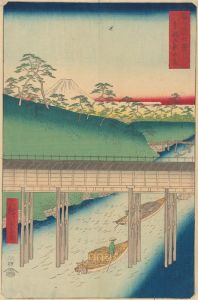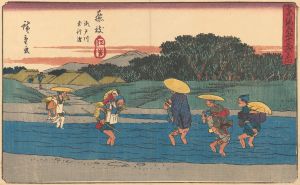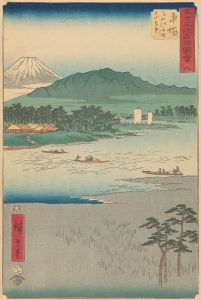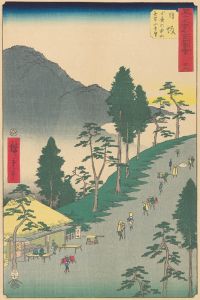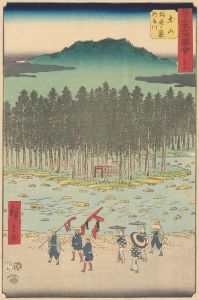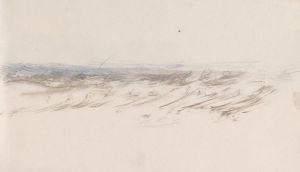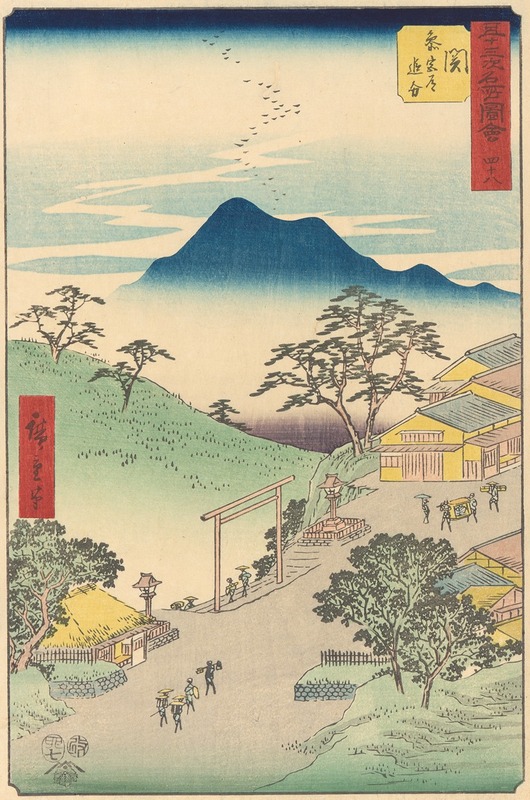
Seki
A hand-painted replica of Andō Hiroshige’s masterpiece Seki, meticulously crafted by professional artists to capture the true essence of the original. Each piece is created with museum-quality canvas and rare mineral pigments, carefully painted by experienced artists with delicate brushstrokes and rich, layered colors to perfectly recreate the texture of the original artwork. Unlike machine-printed reproductions, this hand-painted version brings the painting to life, infused with the artist’s emotions and skill in every stroke. Whether for personal collection or home decoration, it instantly elevates the artistic atmosphere of any space.
"Seki" is a woodblock print by the renowned Japanese ukiyo-e artist Andō Hiroshige, part of his celebrated series "The Fifty-three Stations of the Tōkaidō" (Tōkaidō Gojūsan-tsugi no Uchi). This series, created in the early 1830s, is one of Hiroshige's most famous works and depicts the scenic views and landscapes encountered along the Tōkaidō road, the main travel and transport route between Edo (modern-day Tokyo) and Kyoto during the Edo period in Japan.
Hiroshige's "The Fifty-three Stations of the Tōkaidō" series consists of 55 prints, including the starting point at Nihonbashi in Edo, the 53 post stations along the route, and the endpoint in Kyoto. "Seki" represents one of these post stations, specifically the 47th station on the Tōkaidō road. The post stations were established to provide lodging, food, and other services to travelers, and they played a crucial role in the infrastructure of Edo-period Japan.
The "Seki" print, like others in the series, captures the essence of travel during this era, showcasing the natural beauty and cultural significance of the location. Hiroshige's work is known for its use of vibrant colors, attention to detail, and ability to convey the atmosphere of the scene. His prints often include travelers, local inhabitants, and the surrounding landscape, providing a glimpse into the daily life and environment of the time.
Hiroshige's style is characterized by its use of perspective and composition, which were innovative for the period. He employed a technique known as bokashi, a method of creating gradations of color, to add depth and dimension to his prints. This technique is evident in the "Seki" print, where the subtle transitions of color enhance the visual impact of the scene.
The Tōkaidō series was highly popular in its time and remains influential in the art world today. Hiroshige's work had a significant impact on Western artists, particularly the Impressionists, who admired his ability to capture the fleeting moments of everyday life and his innovative use of perspective and color. The series is considered a masterpiece of ukiyo-e art and continues to be celebrated for its artistic and historical value.
Hiroshige's portrayal of "Seki" and the other stations along the Tōkaidō road not only serves as a visual record of the period but also reflects the cultural and social dynamics of Edo-period Japan. His work provides insight into the travel customs, landscape, and architecture of the time, making it an invaluable resource for understanding the historical context of the era.
Overall, "Seki" by Andō Hiroshige is a testament to the artist's skill and vision, capturing the beauty and essence of a journey along one of Japan's most important historical routes. The print, along with the rest of the Tōkaidō series, continues to be appreciated for its artistic merit and its contribution to the cultural heritage of Japan.





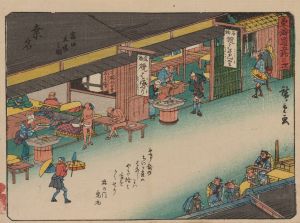
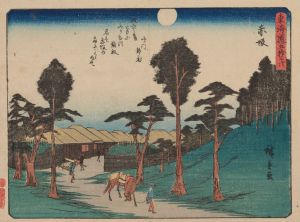
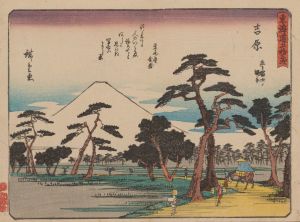
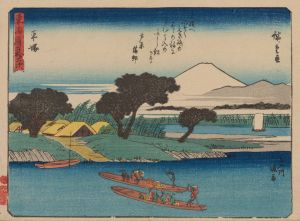
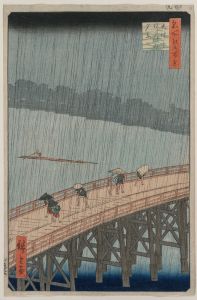
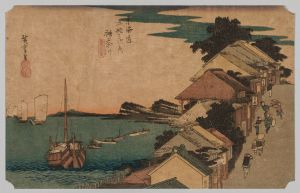
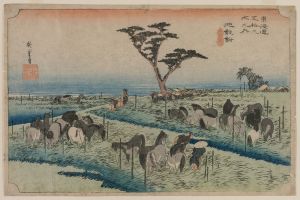
![Fujisawa; Yugyôji [temple name]](/imgs/213015/s/ando-hiroshige-fujisawa-yugyoji-temple-name-73299045.jpg)
